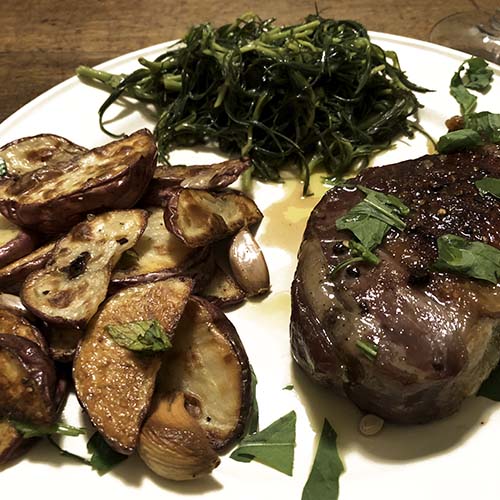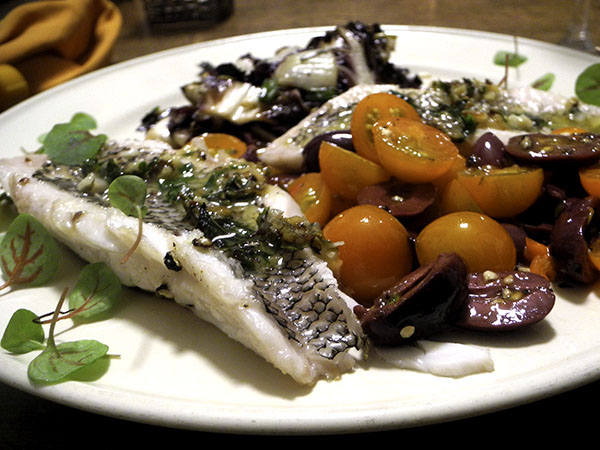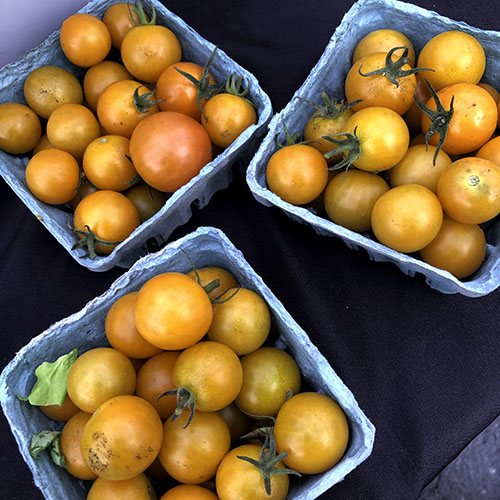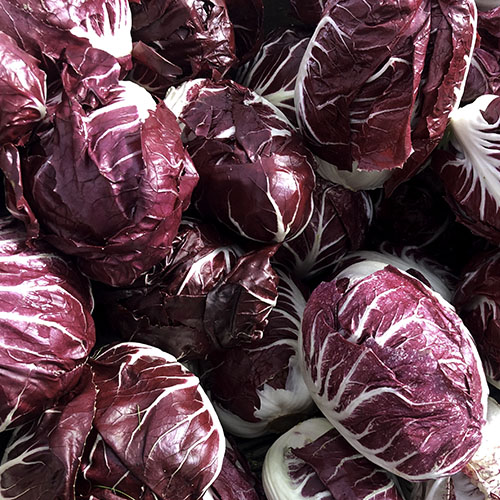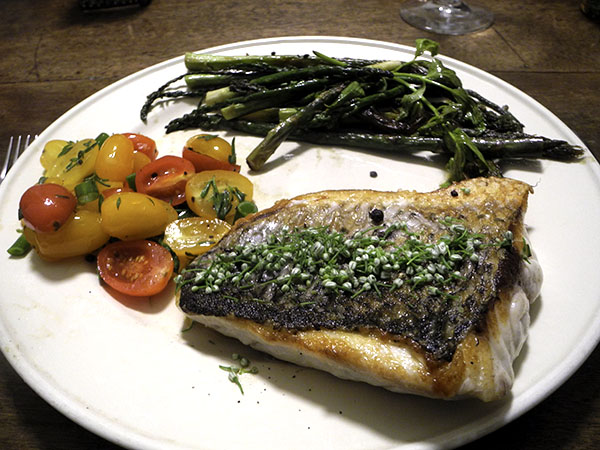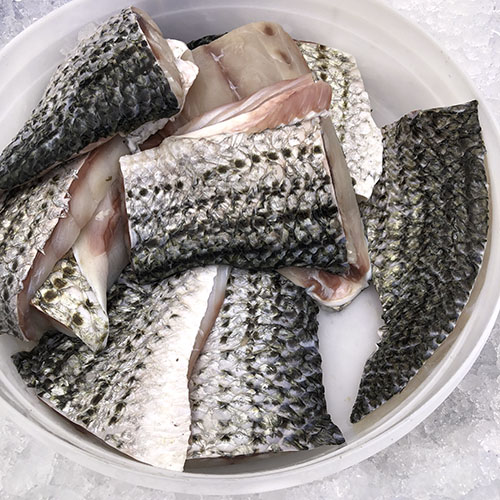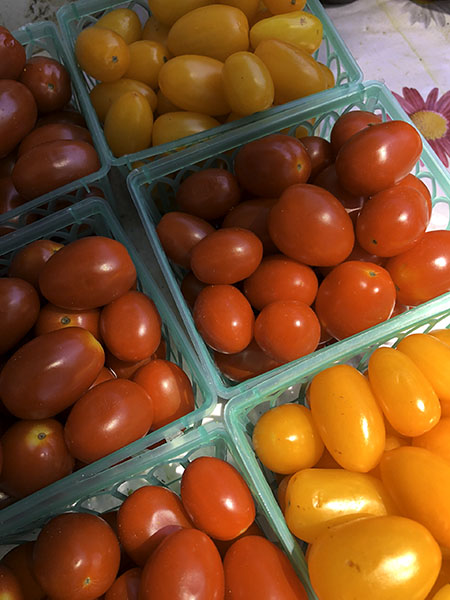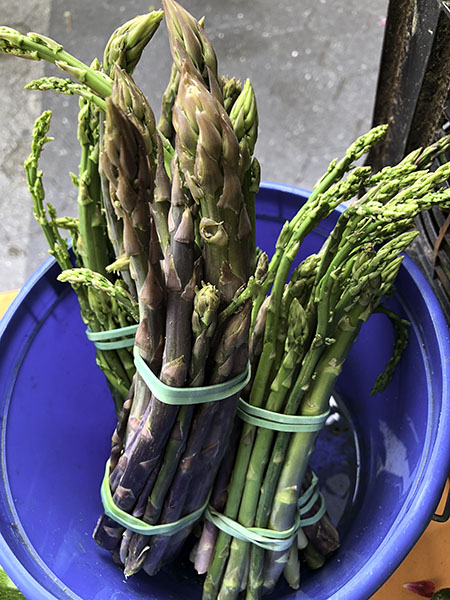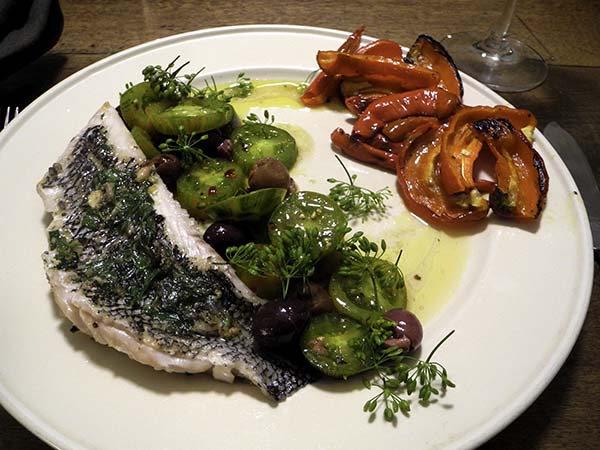
It was delicious, and I think the plate looks good, which makes me almost as happy. Nothing was planned even seconds ahead in the presentation; it just unfolded, the fillet first, then the peppers, finishing with the salsa. The tomato and olive mix was placed close to the fish and not the peppers, because it was definitely an attribute of the former. It was not arranged on or under it because it would have at least partially obscured the beauty of the skin and the herbs with which the bass had been cooked, and because, being room temperature, it would have compromised its remaining warmth.
One other note about last night, something I can rarely say: No allium of any sort was harmed in the making of this meal.
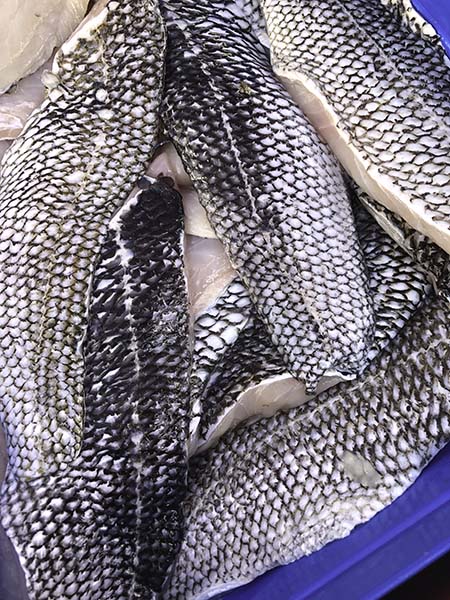
- two 6-ounce black sea bass filets from American Seafood Company in the Union Square Greenmarket, whose preparation began, once they had been removed from the refrigerator, with a fresh salsa assembled inside a small bowl about 30 minutes in advance of their cooking, incorporating one cup of sliced green heirloom tomatoes from Norwich Meadows Farm, about half a cup of pitted Gaeta olives from Flatiron Eataly, a little crushed dried peperoncino Calabresi secchia from Buon Italia in the Chelsea Market, some local P.E. & D.D. Seafood Company sea salt, freshly-ground black pepper, a pinch of crushed dried (now in powdered form) golden/orange habanada pepper, and a little olive oil, the mix tossed and then set aside while the fish was cooked: two 5 and a half-ounce black sea bass fillets, also from American Seafood Company, seasoned on both sides with sea salt and freshly-ground black pepper, sautéed over a fairly brisk flame in a little Mac Nut macademia nut oil from Whole Foods Market inside a large vintage oval tin-lined copper skillet, skin side down (because that will be the side seen on the plate later), turned over after about 3 minutes and the flesh side cooked for about the same length of time, or when the fish was done, when it was removed to 2 plates and kept warm while 2 tablespoons of butter were added to the pan and allowed to melt, a couple tablespoons of a mix of chopped spearmint from Stokes Farm and chopped parsley from Phillips Farms (an inspired choice, I think, but there are potentially so many others) tossed in, along with a tablespoon or more of Whole Foods Market organic Mexican lemon juice, all stirred into the butter for a few seconds before the sauce was spooned on top of the plated bass, and the salsa that had been set aside earlier arranged next to the fillets, both fish and salsa garnished with some wonderful pungent dill flowers from Quarton Farm scissored from their stems
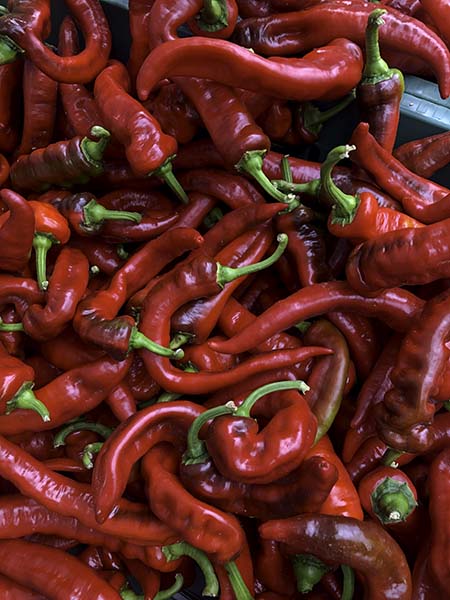
- two handfuls of beautiful fresh, fruity (and with no heat) ‘Jimmy Nardello’ sweet Italian frying peppers from Campo Rosso Farm, washed, trimmed, dried, sliced lengthwise, their seeds and piths removed (although there was not much of either), seared and cooked until slightly carbonized inside a large (13″) well-seasoned cast iron pan in a little olive oil (not enough to fully cover the bottom of the pan), turning the peppers once or twice, sprinkling them with salt, and black pepper, as they cooked, and arranged on the plates
- the wine was an Italian (Sardinia) white, Sella & Mosca Vermentino di Sardegna La Cala 2016, from Garnet Wines
- the music was Marin Marais’ 1709 opera, ‘Sémélé’, performed by Le Concert Spirituel
